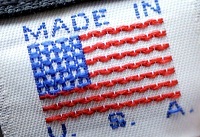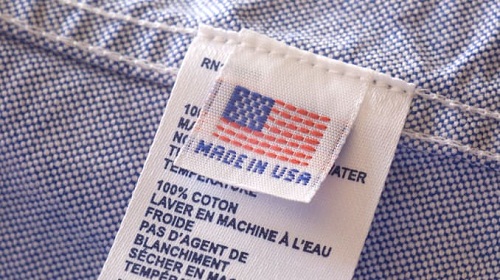FW
EU’s Free Trade Agreement (FTA) with Vietnam has come as a big blow to India as it removes 99 per cent of customs duties enabling Vietnamese services and public procurement markets to EU companies. India’s neighbors including Bangladesh, Sri Lanka, Cambodia and Pakistan currently ship apparel to the European Union at zero duty while India’s trade agreement with the EU features a 9.6 percent tax rate. This adds to India’s already-stark disadvantage in other areas such as, logistics costs and further erodes its competitiveness vis-à-vis Vietnam, views Gautam Nair, Managing Director, Matrix Clothing.
Vietnam’s FTA with the EU will be another blow to the Indian garment exporters, says Raja M Shanmugham, President, Tirupur Exporters’ Association. According to him, India should adopt a long-term vision of promoting garment clusters, initiating structural reforms and tailoring policy interventions.
Federation of Indian Export Organisations (FIEO) has asked the Commerce Ministry to expedite negotiations on an agreement launched in 2007, but stalled since 2013 due to disagreements over key areas. India has also agreed to hold talks with the European Union. However, the EU has laid conditions to include government procurement, labor standards and sustainability in the FTA, which India finds difficult to accept.
A new report by analytics firm Fitch Solutions predicts, Asia will remain a dominant player in garment production over the coming decade as China will reduce its apparel manufacturing operations and move up the value chain. However, the report says India and Indonesia may lose out due to the lack of conducive business conditions.
According to the report, many other Asian countries may benefit from favorable labor market dynamics such as sufficiently predictable logistical connections to serve external trade, free trade agreements that ensure preferential access to major consumer markets, and geographic proximity to raw material producers in China and India. Vietnam will benefit the most by attracting more investments into the country. In addition, Bangladesh, Cambodia and Myanmar will see greater gains in the coming years as costs in Vietnam will also rise.
The report identifies India and Indonesia as potential recipients of manufacturing shifts and growth in terms of global apparel export share. However, the two countries' annual growth rates will look less impressive compared with the other four countries including Vietnam, Bangladesh, Cambodia and Myanmar. Lack of preferential trade access to the US and EU markets, as well as higher labor costs, will act as major obstacles for these two markets, the report observes. The report estimates high growth potential for textile manufacturing in neighboring countries such as Cambodia, Myanmar, Bangladesh and Vietnam, supported by large and growing active populations and low labor costs.
 The American fashion retail industry was left in a shock as COVID-19 forced overseas factories to shutdown. Retailers were left with no option but to cancel orders and defer payments for completed goods as sales nosedived and stores were ordered close.
The American fashion retail industry was left in a shock as COVID-19 forced overseas factories to shutdown. Retailers were left with no option but to cancel orders and defer payments for completed goods as sales nosedived and stores were ordered close.
In an interview with the Lifestyle Monitor™, Cal McNeil, Program Manager, CFDA explained how the turbulence encouraged American fashion brands to nearshore production closer home. McNeil said, the lockdown impacted cash flows of overseas manufacturers, leading to immediate financial burden. This compelled brands to consider shifting production to local markets such as New York, Detroit, and Los Angeles.
Controlling production through nearshoring
Around 72 per cent respondents to the Cotton Incorporated 2020 Coronavirus Consumer Response Survey (Wave II) believe it is important for them to support local businesses. Six out of ten consumers say they aim to help reboot the economy by buying local products. This growing interest amongst retailers for nearshoring is multi-faceted as it gives them more control over their products and supply chains. Also, it is financially more viable as their production runs are smaller due to slashed orders from retailers, says McNeil.
for them to support local businesses. Six out of ten consumers say they aim to help reboot the economy by buying local products. This growing interest amongst retailers for nearshoring is multi-faceted as it gives them more control over their products and supply chains. Also, it is financially more viable as their production runs are smaller due to slashed orders from retailers, says McNeil.
Brendan Witcher, Vice President and Principal Analyst, Forrester says a lot of companies are shifting their investments from technologies to marketing to win back consumers. Nearly 47 per cent respondents to the Cotton Incorporated survey viewed clothing made in the US as being the main driver of their apparel purchase decisions. While 45 per cent noted mostly buying clothes marketed as Made in the USA.
Investments in technology upgradation
McNeil also said, US fashion manufacturers can currently cater to small-to-medium sized luxury-level designers. They can fulfill large orders for simple patterns and products. However, to increase capabilities and scale of production, they would make more investments in new technologies. The CFDA has launched a Fashion Manufacturing Initiative (FMI) that focuses on technology acquisition through its FMI Grant Fund. The fund has so far invested around $3.5 million in machinery and software to help introduce new services, continue to improve quality and help scale production with better efficiency to New York City’s fashion manufacturing sector.
Adapting to newer manufacturing models
McNeil advises fashion to shift its delivery calendars to closer or in-season models. This will help domestic manufacturing adapt newer manufacturing models such as on-demand or just-in-time manufacturing besides ensuring continued investment in advanced technology and training to increase efficiency. Blue Yonder, a software company believes as supply chain management technology will become more important in future, brands should ensure their fundamental supply chain strategies are in place, such as having an appropriate mix of strategic supplies for critical raw materials, enabling end-to-end visibility and ensuring a good process orchestration.”
The firm advises brands to use technologies that not only offer a complete view of their business but also enable them to leverage AI and machine learning to improve the efficiency of their supply chain. In 2020, the type of brands manufacturing in the US may change as large brands will have to downsize orders to suit local markets. By offering lower-priced production costs, these brands will continue to produce locally.

In his dual role, Tikoo will be responsible for driving corporate growth strategy and accelerating Polyurethanes division business in India. He will report to Rohit Aggarwal, president of Huntsman’s Textile Effects division, for the Huntsman India corporate business and to Steen Weien Hansen, Vice President, Huntsman’s Polyurethanes – Europe, Africa, Middle East and India, for the Polyurethanes business.
Huntsman’s presence in the Indian Subcontinent encompasses the Textile Effects, Advanced Materials and Polyurethanes divisions, two manufacturing sites, corporate shared services and a major research and development facility serving the region.
Aggarwal said, “We are pleased to welcome Tikoo to Huntsman and are confident that his business acumen and diverse industry experience will lead Huntsman to our next phase of growth.”
Hansen added, “The Indian subcontinent is a very important emerging market for our Polyurethanes business. Our customers respect innovation. Under Agarwal’s leadership, we will strengthen ourinnovation and customer-centric approach.”
Tikoo joins Huntsman from BYK, where he wasmanaging director of its South Asia region. Prior to BYK, he held various roles with Agfa and AkzoNobel. Rahul earned an engineering degree from the University of Pune and a master’s degree in business management from JBIMS, Mumbai.
Despite the availability of low-cost loans to pay wages, repeated requests from the labor ministry and a recent uptick in work orders from international buyers, apparel workers in Bangladesh factories are still being sacked. This month alone, another 1,000 workers lost employment, according to Amirul Haque Amin, president of the National Garment Workers Federation.
The actual number of workers who lost jobs in recent months is a lot higher than the estimate of the DIFE as many were not registered properly, he said.
Bangladesh's garment factories have been among the worst-hit as the coronavirus pandemic caused the demand for apparel items to collapse in Western markets, forcing them to shutter operations after the contagion hit the shores of the country in late March.
The laying off came although the government has given the factory owners a stimulus package to pay wages and salaries to the workers, the labour leader said.
On the eve of the countrywide shutdown, the government unveiled a Tk 5,000-crore emergency package for exporters to help them pay wages and salaries to workers. However, the pace of laying off has started to drop off as the factories are receiving an increased amount of work orders after the opening up of stores in Europe and the US, the main destinations of Bangladesh's garment items.
PVH Corp has received approval of its absolute greenhouse gas (GHG) emission reduction targets from the Science Based Target initiative, marking the company’s progress towards a zero-carbon economy, according to its 2019 annual Corporate Responsibility (CR) Report, first since last year’s launch of its ambitious CR strategy - Forward Fashion.
Forward Fashion sets a new level of ambition to drive transformational change across PVH, its businesses and the fashion industry. The CR report highlights the company’s progress in reducing negative impacts to zero and increasing positive impacts to 100 per cent. This is PVH’s 12th annual CR report.
This year’s report increases the company’s data disclosure and expands transparency around workforce inclusion and diversity (I and D) information. PVH sees this as an important first step in meaningful progress to ensure all people and communities are represented, and in creating a workplace environment where every individual is valued and every voice is heard.
The report highlights that the company sourced approximately 50 per cent of its cotton footprint sustainably. This is halfway towards its target to sustainably source 100 per cent of its cotton by 2025. It also expanded I and D data disclosing gender and racial/ethnicity representation breakdowns across both PVH’s corporate offices, and retail and warehouse facilities.
The company has reached its goal and CR target of achieving gender parity in leadership positions (defined as VP+ level). Going forward, PVH will focus on achieving gender parity at the most senior leadership levels (SVP+).
As Iconix Brand Group, Inc. continues its search for a financial lifeline, the New York-based brand management company is examining a range of strategic alternatives, including a potential sale or merger.
The company, whose owned brand portfolio includes Umbro, Lee Cooper and Ecko Unltd, announced that its management has received authorization from the board to explore options ranging from a possible sale or merger to debt and equity financings.
As it expands its strategic review process, the company will continue to work with financial adviser Ducera Partners, as well as its legal counsel, Dechert. The news comes after Iconix’s announcements that it is selling its Umbro and Starter businesses in China for $62.5 million and $16.0 million, respectively. According to the company, it intends to use the funds raised by these transactions for debt repayment and covering general corporate expenses. Both sales are expected to close by September 15.
As part of its strategic response to the negative impact of the coronavirus pandemic, Iconix has already reduced its headcount and eliminated non-essential operating expenses, measures which the company says will lead to more than $10.0 million in annualized cost savings.
A report by the Vietnam Textile and Apparel Association said 80 per cent of businesses in the industry laid off personnel in April and May due to a massive decline in textile and garment production. Another report by the Ministry of Industry and Trade says, textile production in the country grew just 2.8 per cent year-on-year in the first half of the year compared to 11.5 per cent in the same period last year. Garment production also fell by 4.7 per cent with the industry having difficulties sourcing raw materials and rapidly losing export orders to the pandemic.
This led to either delay or cancellation of export orders. In May, up to 50 per cent orders were canceled or postponed, and global prices fell 20 per cent as a result of the plunging demand. Most companies shifted their focus from clothes to face masks to meet the rising demand globally. Vietnam exported 557 million masks in the first six months, with the US, Germany, Singapore and South Korea being the main markets.
However, mask exports would not make up for the lack of garment orders as garment exports are likely to decline by 23 percent this year to $30 billion, views Le Tien Truong, CEO of the Vietnam National Textile and Garment Group.
A study by the US-based Freedonia Group, a division of MarketResearch.com says, COVID-19 is transforming the global market for non-woven-based PPE products as producers are expanding capacities to avoid supply shortfalls
This capacity expansion also aims to mitigate lost sales in other key markets, like automobile and furniture manufacturing, both of which are declining amid the pandemic due to dampened consumer spending.
According to the study, demand for meltblown non-wovens is projected to grow by12 per cent in 2020 and by 6.3 per cent per year till 2024 to $6.71 billion. The surging demand for meltblown nonwovens, used in crucial medical supplies like masks, caused supply shortages and price hikes that were offset by losses in the large automotive filter market, as the need to combat the spread of COVID-19 boosted use of protective gear, said the Freedonia Group in a press release. Like meltblown, demand for spunbond non-wovens is forecast to grow by 3.3 per cent annually till 2024 to 5.23 million metric tonne. Demand for this product was boosted by a surge in demand for medical and hygiene product applications in the first half of 2020 due to the pandemic.
UK brand Primark, the fashion retailer owned by AB Foods does not plan to leverage the British government scheme, eschewing a bonus of about $38 million, to pay employers for bringing back staff from furlough. The company removed employees from government employment support schemes in the UK and Europe in line with the reopening of majority stores. The company believes it should not be necessary therefore, to apply for payment under the Bonus scheme on current circumstances.
The bonus scheme, which could cost up to £9 billion if employers brought back all nine million people who have been on furlough, also applies retroactively. The retailer had closed all its stores in March when the COVID-19 outbreak in Europe intensified, costing it about £650 million in net sales a month. It paid 68,000 of its staff members who were furloughed from government aid. It has since reopened stores, including sites in Britain last month, where around 30,000 employees were furloughed.












